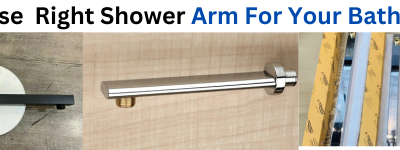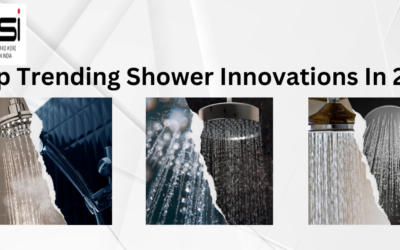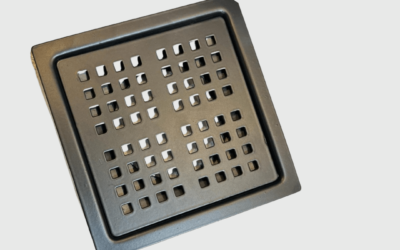
Shower Safety: Protecting What Matters Most.
supperadmin2024-01-08T10:18:57+00:00In the bustling pace of modern life, the shower is often a sanctuary—an oasis of tranquility where you wash away the stresses of the day and rejuvenate your spirit. However, as much as we cherish our daily showers, we must not overlook the importance of safety within this cherished space. In this comprehensive guide, we delve into the world of shower safety, exploring essential features such as non-slip surfaces, grab bars, and anti-scald technology. Join us on this journey to ensure that your daily ritual remains not only refreshing but also secure.
The Significance of Shower Safety
Shower safety isn’t just a matter of convenience; it’s a critical concern for every household, particularly for individuals with mobility challenges, young children, and the elderly. Thousands of bathroom accidents occur each year, many of which are preventable with the right safety features in place. Let’s delve into the key safety aspects that every homeowner should consider when designing or updating their shower space.
Non-Slip Surfaces: The Foundation of Safety
The shower floor is often slippery, especially when wet. This inherent slipperiness can lead to unfortunate accidents, resulting in injuries ranging from minor bruises to more severe consequences. Non-slip surfaces are designed to combat this issue, providing a secure footing even when the floor is wet.
Types of Non-Slip Surfaces
Textured Tiles: Textured tiles feature raised patterns or a rough surface that enhances grip. They come in various materials, including porcelain, ceramic, and stone, making it easy to find a style that complements your bathroom decor.
Rubber Mats: Rubber mats with suction cups are a cost-effective solution for enhancing shower safety. They are easily removable and can be placed strategically within the shower stall.
Non-Slip Coatings: Non-slip coatings can be applied to existing shower floors, providing an invisible layer of protection. These coatings create friction, reducing the chances of slipping.
Built-in Non-Slip Surfaces: Some shower bases come with built-in non-slip textures or patterns. These are permanently integrated into the design and are a seamless part of the shower floor.
Investing in non-slip surfaces is a proactive step in shower safety. It’s a simple yet effective measure that significantly reduces the risk of slips and falls in the bathroom.
Grab Bars: A Helping Hand
Grab bars are perhaps one of the most valuable safety features in a shower, especially for individuals with mobility limitations. These bars offer stability and support, aiding users in maintaining their balance while entering, exiting, or moving within the shower.
Types and Placement of Grab Bars
Horizontal Bars: These are typically installed horizontally along the shower walls. They provide support for standing, sitting, or transitioning from a wheelchair to a shower chair.
Vertical Bars: Vertical grab bars are often installed near the entrance of the shower. They can be used to assist with balance while stepping in or out of the shower.
Angled Bars: Angled grab bars are strategically positioned to offer support at an incline. They can be especially useful for those who require support at varying heights.
Fold-Down Bars: Fold-down grab bars provide the flexibility of folding up when not in use. This is particularly helpful in small shower spaces or for those who share the bathroom with family members who do not require grab bars.
The placement of grab bars should be carefully considered, ensuring that they are easily reachable from both inside and outside the shower. Proper installation, typically into wall studs, is crucial to ensure they can bear the user’s weight securely.
Anti-Scald Technology: Guarding Against Burns
Scalding water is a genuine concern in the shower, especially when sudden temperature fluctuations occur. Anti-scald technology is designed to prevent water temperatures from reaching dangerously high levels, reducing the risk of burns.
Types of Anti-Scald Features
Thermostatic Mixing Valves: These valves automatically balance the hot and cold water supply, maintaining a consistent and safe temperature. If there is a sudden drop in cold water pressure, they can also shut off the hot water to prevent scalding.
Pressure-Balancing Valves: Pressure-balancing valves adjust the water pressure between hot and cold water lines to maintain a consistent temperature. However, they may not provide the same level of precision as thermostatic valves.
Digital Shower Controls: Some modern showers feature digital controls that allow users to set and maintain a specific water temperature. This technology offers precise control over the water temperature.
Anti-scald technology is especially crucial for households with children or elderly individuals who may be more susceptible to burns. It provides peace of mind, knowing that the water temperature will remain safe and comfortable.
Creating a Safe Shower Space
Ensuring shower safety involves more than just installing the right features; it also requires ongoing maintenance and responsible usage. Here are some additional tips to create a safe shower environment:
Adequate Lighting
Good lighting is essential for a safe shower experience. Ensure that your bathroom is well-lit, and consider installing waterproof lighting fixtures within the shower itself.
Regular Maintenance
Keep an eye out for any signs of wear or damage to non-slip surfaces, grab bars, and anti-scald devices. Regular maintenance and prompt repairs are essential.
Handheld Showerheads
Handheld showerheads offer greater flexibility and control while showering, allowing users to reach all areas of the body with ease.
Shower Chairs and Benches
Consider adding a shower chair or bench for individuals who may have difficulty standing for extended periods. These provide a convenient seating option.
Adequate Space
A spacious shower stall provides room for safe maneuvering. Consider a curbless or walk-in shower design for enhanced accessibility.
Educate Family Members
Ensure that all family members are aware of the safety features in the shower and how to use them effectively.
Conclusion
Shower safety is not an option—it’s a necessity. By implementing non-slip surfaces, grab bars, and anti-scald technology, you create a secure shower environment for everyone in your household. Whether you’re designing a new bathroom or retrofitting an existing one, prioritize safety to ensure that your daily shower remains a refreshing and risk-free experience. After all, the shower should be a place of rejuvenation, not a source of worry. RSI Bath: Your Trusted Source for Bathroom Showers. As a passionate trader of bathroom showers and importer of bathroom showers, I bring top-quality shower solutions to enhance your bathing experience. With a focus on style, innovation, and performance, RSI Bath ensures your bathroom is a haven of luxury and functionality.








